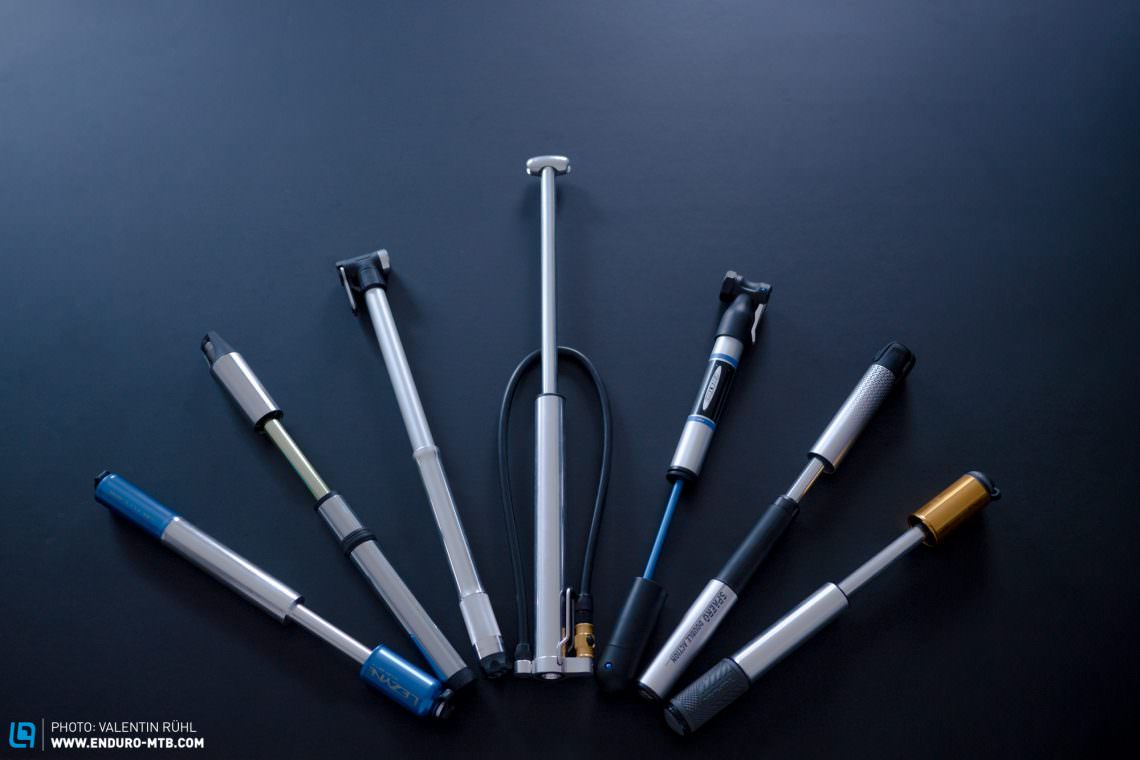The best MTB mini pump you can buy
We’ve all had that sinking feeling of knowing you’ve just punctured halfway down a run. But whatever; shrug it off, pull to the side and hope you’ve got the right tools. Alongside a tube and tire levers, you won’t get much further without a decent mini pump. But what constitutes a worthy one and which one will just pump you up with hot air?
The trademarks of a good mini pump
Firstly, a good mini pump has to work as a pump – i.e. with an efficiency that gets the job done in a minimal time frame. In the name of fairness, we gathered a key stat for each mini pump, looking at exactly how many strokes it takes to reach 2 bar. But is that all that counts? Definitely not. You’ve also got to consider the following:


Quality
Ok, you can buy budget pumps for a handful of coins at supermarkets, but we’ve cherry-picked better value (and better quality) models from reputable brands. If you’re paying more than € 20 then you can expect a certain standard of manufacturing, which is fundamental for a long lifespan. A good pump should definitely outlive your bike. Most are made of aluminium and plastic, which keeps their weight down. The presence of plastic doesn’t necessarily have to be seen as a disadvantage, but it does vary from model to model. When it comes to the connectors, that’s where quality really counts and you’ll want these to stay in a good, smooth condition and keep tight.
The ergonomics
When it comes to the crunch, you want to get your puncture fixed and back on the trail in lightning-quick time – so how the pump works and the exertion it asks of you will either leave you screaming like a spoilt kid at the supermarket checkout or laughing with the confidence of a prized fighter. Forget about arm pump: hand cramps and arm fatigue from a less-than-ideal pump are much worse. A lot of pumps have flexible hose attachments, which can either be pulled out simply or removed and screwed on. They’re pretty useful if you worry about breaking the valve. Valves aren’t all alike either, and connecting to various ones can be another issue, especially if you unscrew too violently. All of pumps on test connect to presta and schrader values, but sometimes you can have adjust grommits and washers for different valve types (these can easily go AWOL). Last but no least, a decent pump should have an efficient stroke – the best pump on test still needed more than 180 strokes to reach our desired psi.



Weight and price
If weight wasn’t an issue then we’d take a compressor out on the trails with us, but obviously size and weight want to be kept to a minimum because you’ll be carrying them in your backpack or pockets. The pumps on test weigh between 126 g and 177 g, which make them all suited for on-the-fly work. In terms of price, the models retail between € 23 and 45, which could seem steep – but trust us, even the weakest in this group test will out-pump a budget model.
| Weight | Price | Strokes to reach 2.0 bar | |
|---|---|---|---|
| Birzman Infinite-Apogee | 177 g | € 44.90 | 275 |
| Crankbrothers Sterling L | 144 g | € 39.99 | 190 |
| Lezyne Alloy Drive | 132 g | € 35.95 | 185 |
| Park Tool PMP-4 | 132 g | € 22.95 | 260 |
| SKS Spaero Double Action | 160 g | € 39.99 | 260 |
| Topeak Race Rocket MT | 126 g | € 34.95 | 225 |
| Lezyne Micro Floor Drive HV | 200 g | € 49.95 | 180 |








